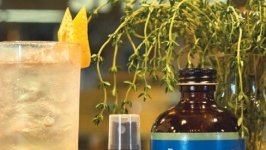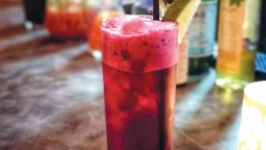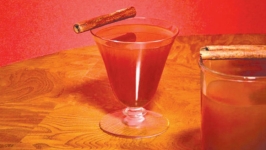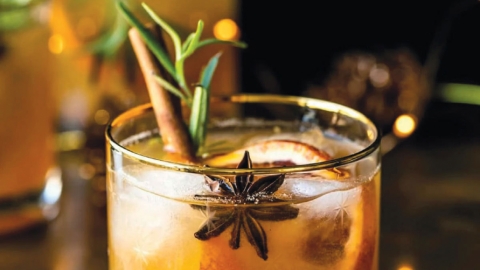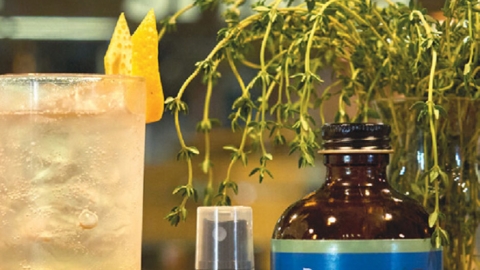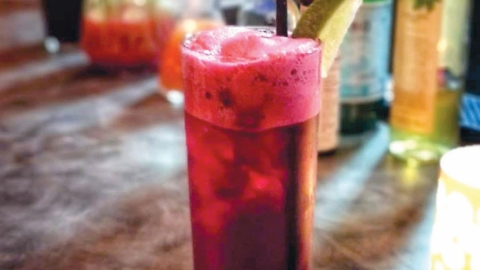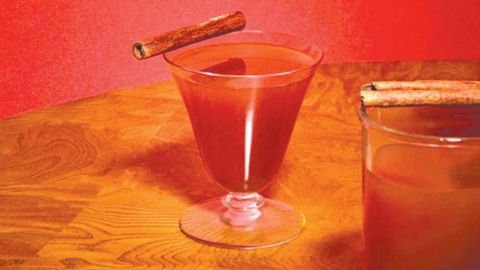Well-Crafted Mocktails are Raising the Bar when it Comes to Alcohol-Free Options
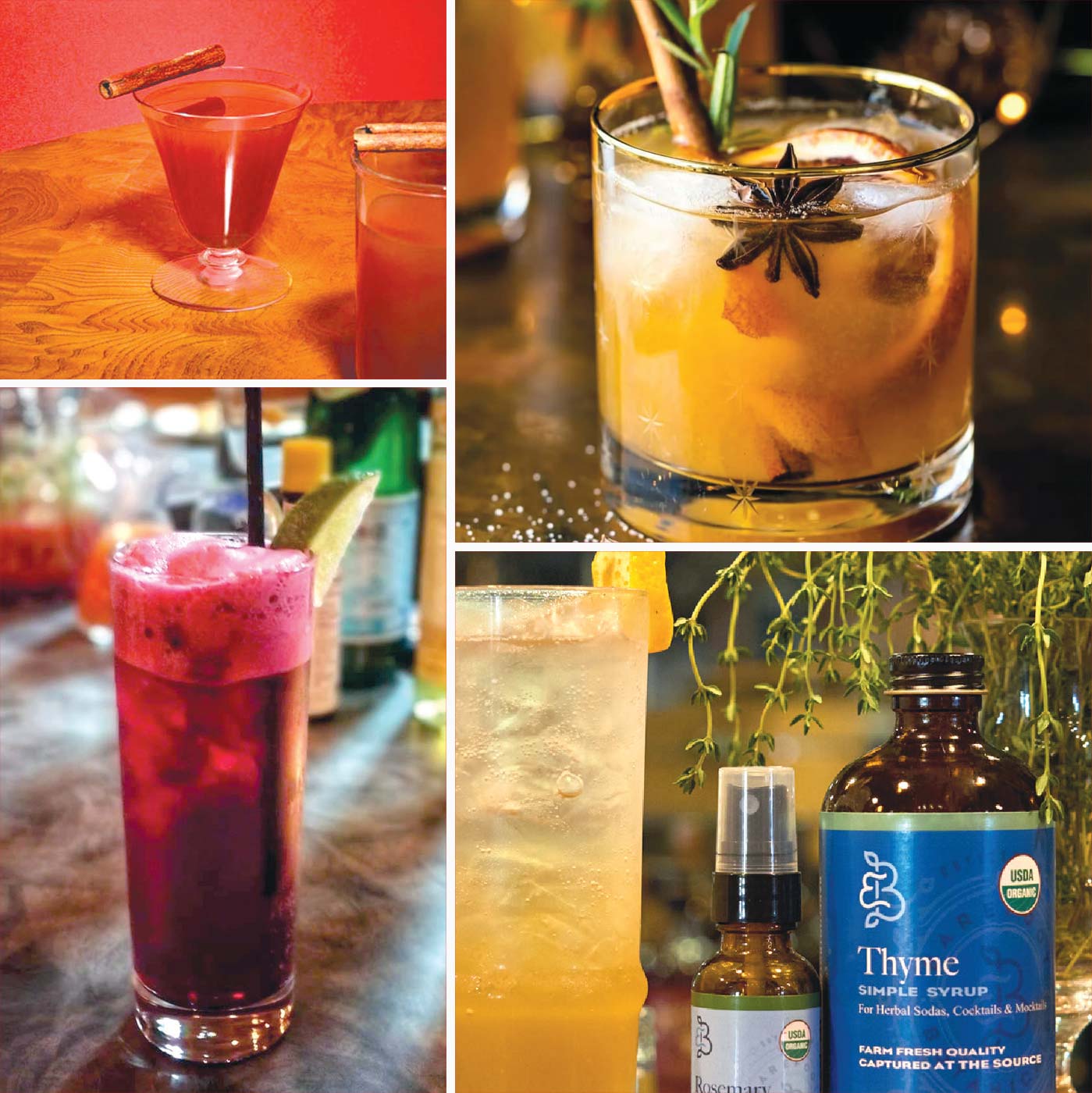
From a round of beers after work to a perfectly paired wine with dinner to a celebratory champagne toast, alcohol is a big part of many people’s lives. In fact, this year, the United States alcohol industry was valued at a whopping $283 billion and that number is expected to rise.
Also rising, however, is the percentage of folks who choose not to imbibe. According to a study conducted by Penn State University , there was a 15% increase in the sale of low-alcohol or alcohol-free beverages in 2022. While reasons vary, it’s an exciting time for non-drinkers as options are expanding far beyond club soda with lime.
“Up until fairly recently, if you went out to a restaurant and wanted a non-alcoholic beverage, the only options were water, soda, or Shirley Temples,” says Drew Davis of Gem Life Collective, an alcohol-free online bottle shop with physical locations in Pitman. “There was nothing that gave the complexity of a cocktail or nice glass of wine that didn’t contain alcohol.”
Davis, who suffered from an autoimmune disease for over a decade, started to have severe symptoms that landed her in the hospital for a week. Afterward, she was told by her doctors that her pancreas was failing and that she needed to give up alcohol.
“I thought it would be easier than it was. I was a retired party girl but found it so hard to find alcohol alternatives and still feel included in the party,” she says. “Through my journey, I learned that a lot of folks don’t drink alcohol, either for health or religious reasons, and that this group of people was—quite literally—underserved. I thought, ‘Wouldn’t it be cool to have a bar or bottle shop that specifically sold alcohol-free options?’”
Davis and her partner, Euston, opened Gem Life Collective in 2020, starting with bottle sales online due to Covid. Today, the shop remains active and ships all over the world. When pandemic social restrictions began to lift, they transitioned to pop-ups.
“After Covid, people needed a space to look, taste, feel, and form community again, and we opened our first space in 2021 in Pitman once the world felt safe again, and offered products from 20 brands. Today, we carry 300 alcohol-free options, including products that are adaptogenic as well as de-alcoholized wines from Europe,” she says, explaining how the wines are cooked down to remove the alcohol while the flavor and complexity remain.
The shop considers itself a “well-being boutique” and their product line includes a “sober curious kit” to bridge the gap between wellness, alcohol, and nightlife. Davis credits the pandemic for elevating the alcohol-free movement.
“Post Covid, people are looking to reconnect to the community that they lost or looking for new and authentic connections,” she says. “People seem very conscious about taking care of themselves now—they’ve experienced physical and mental health issues, and self-medicated by drinking to cope, and don’t want to feel like that anymore.”
While Covid may be one of the reasons for the slow increase of non-drinkers, some just want to imbibe in a more exciting booze-free options. For OM Champagne Tea, a kombucha company based in Mount Kisco, NY, that can also be found at farmers’ markets in Ramsey and Summit, this comes with added health benefits and a pop-able cork.
“Kombucha is a fermented tea that carries similar nuances to champagne or sparkling wine, as they’re produced with similar methods,” says James Hibler, who co-owns the company with his wife, J Y.
“Like champagne, kombucha has yeast that collects in the bottom of the bottle after fermentation called lees. Most champagne manufacturers remove it to add clarity to the finished product, but I think it gives our product more body, flavor, and character,” he says, adding that, like champagne, their product has tiny bubbles and the bottle can be re-capped to hold its fizz to be enjoyed again.
“People want a drink that’s like a drink but not a drink,” says Hibler. “When you drink our champagne tea, you feel like you’re doing something naughty but you’re not, plus it’s low-glycemic,” he says. “Another benefit is that you don’t have to feel paranoid or anxious about getting pulled over like if you were driving under the influence.”
What’s more, OM’s flavors are special and more exotic than many top-shelf booze choices.
Their products include exotic blends and flavors ranging from elderflower to grapefruit matcha to a ginger-turmeric that uses special Hawaiian red turmeric that Hibler has shipped directly from the Big Island. “It tastes like a non-alcoholic mimosa,” he says. Other unique combinations include a lemony blend featuring lemon balm, lemongrass, and lemon verbena, mango shiso, as well as a festive winter blend that includes a reduction of traditional mulling spice paired with antioxidant-rich chaga mushroom. “It goes great with a scoop of vanilla ice cream,” he says. “It makes the best float.”
While skipping alcohol has benefits of its own, herbal ingredients give an additional health boost.
For Linda Shanahan of Bluestem Botanicals in Doylestown, PA, offering herbal ingredients and drink kits has been helping people learn about the benefits of herbs, one mocktail at a time.
The company, now in its 17th season, started out as an organic vegetable farm but over time focused on herbs entirely.
“I studied herbalism in the ’90s and always had a big portion of the farm in herb production. We got to the point where we needed to refocus the farm to be more sustainable, so we niched down to growing entirely herbs,” she says, focusing on herbs for the culinary market with an emphasis on medicinals.
WITH TRADITIONAL COCKTAILS YOU HAVE A NATURAL PLACE TO BEGIN, LIKE BOURBON OR VODKA; BUT WITH MOCKTAILS, YOU’RE WORKING WITH A FLAVOR PROFILE AS A STARTING POINT AND BUILDING FROM THERE, JUST LIKE YOU WOULD IF PAIRING FOOD WITH WINE
Their current line of herbal beverage products came by way of popular demand.
“We started hosting herbal cocktail and mocktail hours at the farm informally with friends, or open houses,” she says. “We didn’t realize it would be something we’d incorporate into sales—we just did it for fun.”
Now, it makes for a huge part of their business, and they sell retail cocktail and mocktail kits that include simple syrups, tinctures, bitters, and hydrosols—distillates made into “aromatizers” to be sprayed atop drinks.
“When they’re spritzed on top of a drink, you’re enhancing the sensory experience. Every time the glass is touched or brought to your nose, you get a hint of that scent. It enhances the experience by incorporating all the senses,” she says.
The company started out with more recognizable herbs for their products, like lemongrass and lavender, and has since expanded to include rose geranium, ashwagandha, and native plants like goldenrod and black walnut.
While the sugar in the simple syrups can slightly negate the healthy aspect of a mocktail, the herbs that are used to make their bitters are quite healthful, she says.
Shanahan explains that the chemicals in plants are what provide that bitter taste and can stimulate the digestive processes throughout the body. “Bitter herbs or foods stimulate saliva production and hydrochloric acid in the stomach,” notes Shanahan. “All of this is so important for digestion and more,” she says, adding that a beverage with bitters is great pre-meal to get the digestive juices going.
“Whether our products are used in cocktails or mocktails, it’s been a great way to introduce people to the benefits of herbs and provide them a very accessible way.”
While crafting flavors that go well together can be a little bit of an informed experiment, it can truly be an art when it comes to pairing with food.
For Andre deWaal of Andre’s Lakeside Dining in Sparta, taking the plunge into mocktails came by way of both passion and necessity.
After having his restaurant in Newton for 17 years, he sold it, as well as their liquor license, and reopened in Sparta in 2016.
“We opened as a BYO without a liquor license, and while we’re partnered with Alba Vineyard and offer wine sales by the bottle, we weren’t able to sell beer or spirits,” he says. “But, if you don’t BYO or drink wine, I don’t want your only options to be Sprite or Coke. I wanted to offer something that paired well with our food, is memorable, and sets us apart.”
In an era where good, fresh produce is easy to come by (especially in the Garden State), deWaal shares the importance of going above and beyond to create both a memorable dining and drinking experience.
“When someone goes back to work on Monday and people ask what they did over the weekend, instead of simply saying, ‘Oh, I went out to dinner,’ I want to give them a memorable experience they can share, including something unique like an alcohol-free cocktail that knocked their socks off.”
Their mocktails (which they’ve named Zero Gravity cocktails) are comprised of seasonally available ingredients, served and garnished in a highball glass or stemware like their high-test counterpart (if not more sophisticatedly).
When it comes to food pairing, it takes a bit of science and a well-seasoned palate to concoct the perfect accompanying mocktail.
“With traditional cocktails you have a natural place to begin, like bourbon or vodka; but with mocktails, you’re working with a flavor profile as a starting point and building from there, just like you would if pairing food with wine,” he says, noting that he often uses wine as a reference point.
“The major components of wine are fruit, acidity, spice, and tannin. So, I have to think about how can I get these components without the alcohol.” While fruit and acidity are fairly easy components, he says the tannin can be the tricky part—but can be found in tea.
“If you ever have a cup of strong black tea, you feel it dry out the sides of your tongue and cheeks, and you’ll notice that red wine does the same thing. Tannin comes from grape skins and stems, and is naturally available in tea leaves as well.”
DeWaal says the ingredients he uses have to make sense so they pair well with food.
“With a steak, maybe I’d add a little smoke, and then use the juice from dried steeped cherries or use plum juice to make a deeper flavor,” he says, adding that the “heat” of alcohol can be achieved by adding spices like chili, or black, white, or Szechuan peppercorns.
“It’s simple, but not easy,” he says. “But it’s worth it to get people excited about trying new things, and it’s wonderful to see folks catching the mocktail buzz.” ■
gemlifecollective.com
champagnetea.com
bluestembotanicals.com
andreslakeside.com
Tips for Home Mocktail Concocting
Courtesy of Linda Shanahan, Bluestem Botanicals
- Balance sweetness, bitterness, and acidity in a drink. For example, add 1 tablespoon simple syrup, 1 tablespoon of lemon or lime juice for acidity, and a bitter or a bitter extract like tea to juice or seltzer. Experiment!
- To kick it up a notch, add something savory to bring complexity (teas are a great way to add complexity).
- While the lemon or lime helps brighten and lighten a beverage, lighten it even more with carbonization to help bring the aromatics to the nose.
NOTE: Bluestem Botanicals offers recipe cards with their mocktail (and cocktail) kits. bluestembotanicals.com
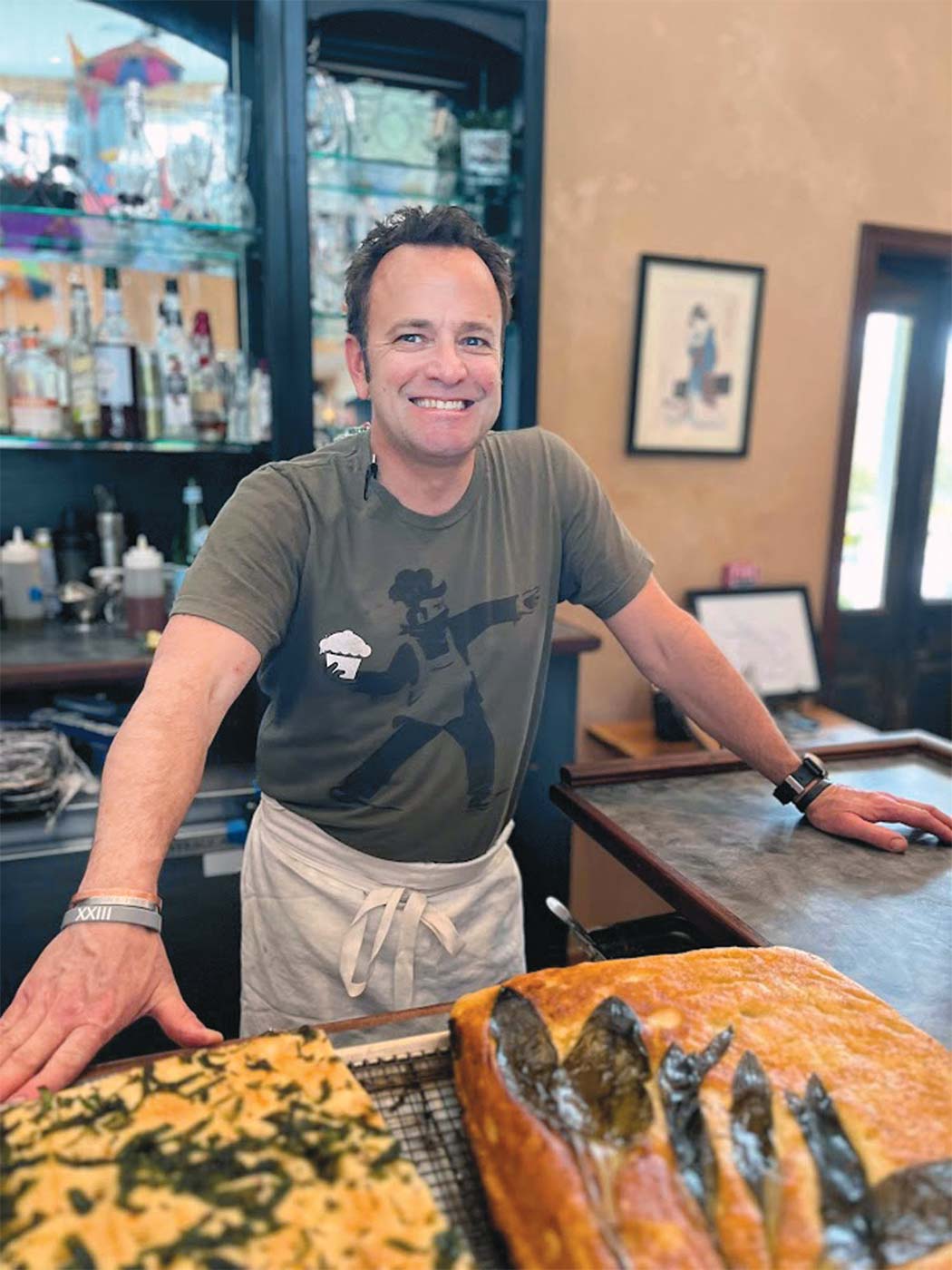
Andre deWaal of Andre’s Lakeside Dining. PHOTO: TRACEY DEWAAL
Restaurants with mocktail menus to write home about:
ANDRE’S LAKESIDE DINING
112 Tomahawk Trail, Sparta
andreslakeside.com
THE FARM AND FISHERMAN TAVERN
1442 Marlton Pike East, Cherry Hill
fandftavern.com
NINETY ACRES AT NATIRAR
200 Natirar Dr., Peapack
natirar.com
SOUTH + PINE
90 South St., Morristown
southandpine.com
THE FOX & FALCON
19 Valley St., South Orange
thefoxandfalconbydb.com
WILLOW AND WHISK
319 Franklin Ave., Wyckoff
willowandwhisk.com



